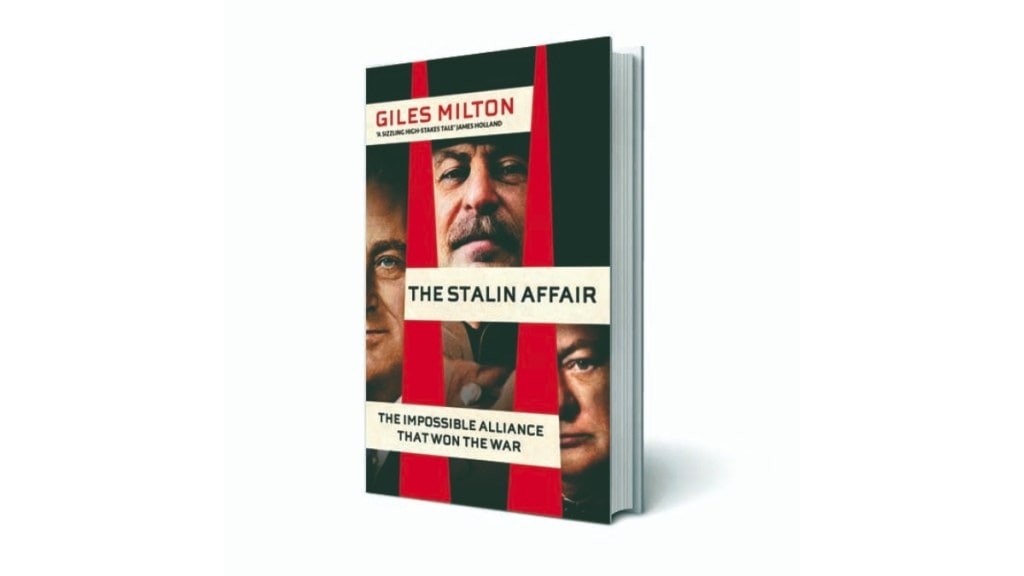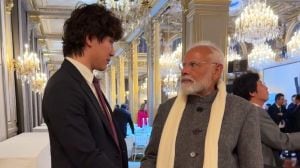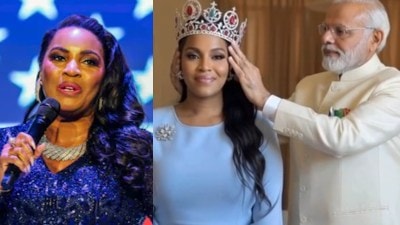By C Uday Bhaskar
World War II began on September 1, 1939, when Germany invaded Poland and came to a formal end on September 2, 1945, with the Grand Alliance (Great Britain, USA and USSR) emerging victorious. In this period, almost 70 million people were killed, including civilians, and the USA used nuclear weapons against Japan.
It is instructive that decades later, the history of this long war continues to throw up new books by diligent researchers. Giles Milton, a bestselling author, delves into one of the epochal events of World War II in his latest volume—how Stalin was persuaded and enabled to join the Grand Alliance.
While Britain and France had declared war on Germany in 1939, the Soviet Union had entered into a non-aggression deal with Nazi Germany in August 1939 when the Molotov-Ribbentrop Pact was signed. Under a secret agreement, Hitler and Stalin proceeded to annex proximate nations beginning with Poland and Lithuania, and in the intervening two years, Germany annexed large parts of Europe. However, by the summer of 1941, Hitler turned his predatory gaze towards the Soviet Union much to Stalin’s disbelief and dismay.
This is familiar history and is the curtain-raiser for Milton to take the reader through a breezy canter of how Stalin refused to believe that Hitler was secretly preparing to attack the Soviet Union. Operation Barbarossa was unleashed on June 22, 1941, and the Red Army routed by German Wehrmacht troops. The first attack on the Soviet Union was a stunning tactical victory for Hitler but it was a colossal strategic blunder, for it laid the foundation for the ultimate defeat of Nazi Germany.
In a brief author’s note, Milton asserts that “this is a true story” and in 39 short chapters weaves a fascinating account of how two ambassadors—Averell Harriman, a wealthy American businessman, and maverick British diplomat Archie Clark Kerr—were sent to Moscow by President Roosevelt and Prime Minister Churchill, respectively, and the extraordinary feat they accomplished—victory for the Allies by mid-1945 by getting Stalin to join the other two leaders against Hitler. This Grand Alliance was achieved by the USA providing the necessary material support to a beleaguered Soviet Union and a wily Churchill engaging with Stalin, despite his candid confession that he was a “consistent opponent of Communism”.
Milton writes with verve and the dexterity of a bestselling author—as opposed to the less dramatic and more rigorous style of the historian—and nowhere is this irreverent flourish more evident than in how Stalin is described. Over the years, references have been made to the walrus moustache of the Soviet dictator and that he looked like a well-fed cat, but here is what Milton has unearthed with his diligent trawling of the personal papers of the principal interlocutors. Archie Kerr, the British ambassador, writes of his first meeting with Stalin: “To me, he suggests a possum rather than a cat.” And then Archie (as he preferred to be called) adds that Stalin was “a possum you would get very fond of, against your better judgement, but would have to keep a sharp eye on, lest he nip you in the buttocks out of sheer mischief.”
The book abounds in interesting detail about Stalin and this was enabled in no small measure by the author being apprised in early 2019 of “a cache of curious wartime letters (over two hundred in number) held in private hands” which were made available to him. These were written by Kathy Harriman, the intelligent, attractive and observant daughter of the US ambassador who accompanied her father to Moscow, and were a veritable treasure trove for the author. This find led Milton to the vast Averell Harriman archive in Washington DC and here the contribution of Bob Meiklejohn—the personal secretary of Harriman who accompanied the ambassador to Moscow—must be acknowledged.
The methodical Meiklejohn maintained a detailed diary of the engagements and meetings of his boss and these eventually turned into “two volumes—841 pages” weighing all of nine pounds. The rich detail in Milton’s book is derived from numerous personal notes and summaries of meetings maintained by versatile, eagle-eyed note-takers with sharp ears, who were present at the major meetings. Greater part of the book is how Stalin was viewed by these chroniclers, and Kathy Harriman emerges as a diligent diarist.
The culmination for Harriman and Archie was the Tehran conference of November 28, 1943, where Stalin met Roosevelt and Churchill for the first time and this was a seminal punctuation that paved the way for the ‘impossible alliance that won the war.’ Again, the textured detail about the first meeting between the leaders is fascinating. Milton refers to Stalin being better informed about international affairs than his American interlocutor and as an example adds: “He (Stalin) even explained to Roosevelt the complexities of the caste system in India.” And quotes Harriman, who notes that he was not surprised about the Soviet leader being better informed and adds: “In my own talks with him (Stalin), I was struck time and again by the extent of his knowledge of other countries, which I found remarkable in view of the fact he had done so little traveling.”
The Tehran conference has been the subject of considerable academic research and writing but here is a Milton vignette that I had not read earlier. Churchill was clearly “dismayed by the manner in which Roosevelt and Stalin were setting the agenda”—and wryly opined later: “There I sat with the great Russian bear on one side of me, with paws outstretched, and on the other side the great American buffalo, and between the two sat the poor little English donkey.”
Milton has been described as a “million-copy bestselling author” and his account of how the Grand Alliance that emerged victorious in World War II was midwifed will appeal to a younger generation that may have little or no knowledge of the tectonic events of the last century. This is a popular and interesting to read historical account, written perhaps with a film script on the horizon. Readers looking for a more deeply researched and substantive academic exploration of the same subject will benefit from dipping into the 1999 tome—Grand Delusion: Stalin and the German Invasion of Russia by Israeli historian Gabriel Gorodetsky. And among journalist-historians, Chris Bellamy has written an in-depth and comprehensive account in his Absolute War: Soviet Russia in the Second World War.
Was Stalin planning to attack Germany in 1941 and was he surprised by Hitler’s pre-emptive strike? This has been the subject of enormous debate and history aficionados will find numerous volumes on this subsection of World War II history. Milton could have explored other historical strands related to Stalin and the heroic Soviet resistance to Hitler but keeps his account limited to rich, occasionally trivial personal detail of the main protagonists.
The book is burnished by a pithy conclusion titled ‘Afterlives’ but it is all too brief. This nine-page conclusion is an apt summary of the short-lived Grand Alliance and the subsequent post-war parting of ways, with Churchill denouncing Stalin that marked the beginning of the Cold War.
While Archie and Averell Harriman played a central role in bringing the leaders together “the Big Three alliance was always fragile, and it was destined not to endure. Against all odds, it had won the war for the Allies. But it was unable to survive the peace.” The Russia-Ukraine war is testimony.
C Uday Bhaskar is director, Society for Policy Studies
The Stalin Affair: The Impossible Alliance that Won the War
Giles Milton
John Murray
Pp 384, Rs 899








